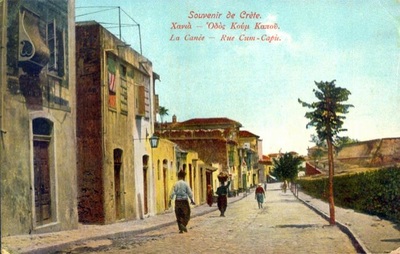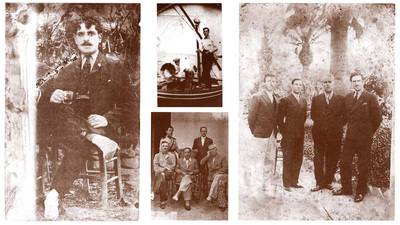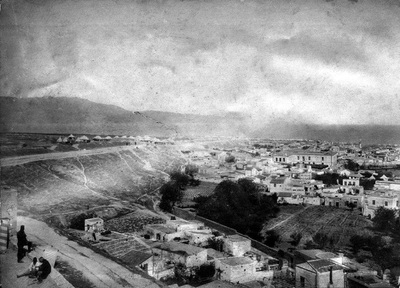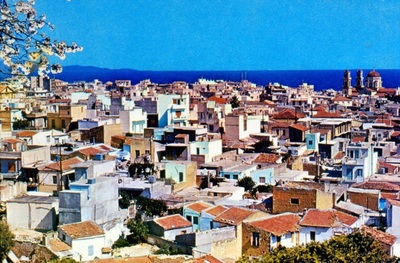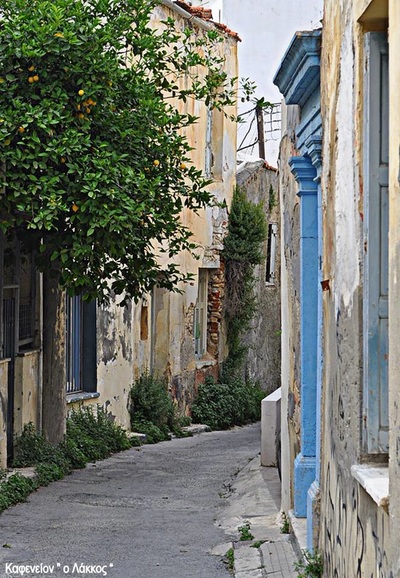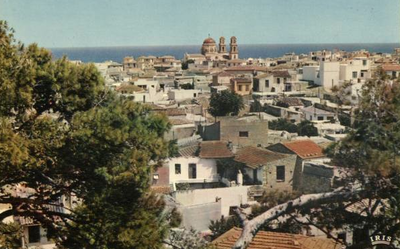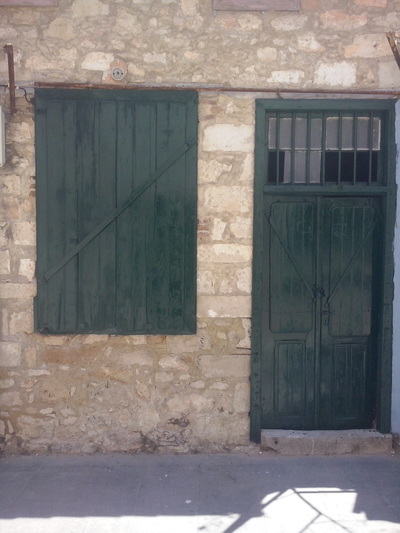Lakkos
|
Lakkos was the pre-eminent neighborhood of underground world in Heraklion. In the narrow streets of its magkes walked, known-unknowns bullies, prostitutes selling love, rebetes improvised songs on their old bouzouki, hashish was a daily habit and generally was a cell of society that had disrupted the quiet life of high urbanised Heraklion society in the early 20th century.Lakkos: The underground neighborhood of vulgar love
All sorts of illegal men in a society that was only in the memory of some Most residents of Heraklion crossing the small and narrow streets in "Kommeno Benteni" and enter the area of the Lakkos do not even know the history of this district that appears to be "lost in time". Next is the newly built Cultural Center of Heraklion. The neighborhood of Lakkos had experienced the greatest prosperity in the early decades of the 20th century. The historical starting point of Lakkos is located about 1900 when the official Cretan State issued the decree "On Chamaitypeion" which ordered the spatial concentration of brothels in certain areas away from the city. The brothels for Christians were placed into the Lakkos, being located next to the British military installations located in the Venetian walls. The site was ideal because it was away from the city center and was relatively neglected. The prostitutes were followed by all the familiar people: Madames, lovers, pimps etc. With the advent of prostitutes and the various brothels, was born gradually an entire underworld alongside that of urban culture which then appeared in Heraklion influenced by contact with the West. Strange guys that were playing hurdy, restaurant owners and thugs, pimps and men that were selling chasish complete the picture of this neighborhood. They used their own language, had nicknames and generally moving in the margin. With this population amalgam Lakkos began its turbulent history, leaving behind an insurmountable legend that retains its power even today. This discreditable ‘’mahala’’, with all sorts of illegal amusements and marginal residents continued to exist until the end of the interwar period. When the Second World War broke and Crete fell to the Germans, prostitutes were transferred to a hotel to serve their conquerors. The Asia Minor refugees After the Asia Minor Catastrophe and the formal exchange of populations, many refugees came to Heraklion in 1922, settled round the Lakkos and mixed with residents. With them they brought their music, which somehow was familiar to the residents of Lakkos since Aman Kafe were in the area. The local residents of Heraklion saw with half eye this outlandish oriental culture and the Turkish exclamations that could be heard in their songs. Lakkos’s magkes The rebetes and bullies constituted a distinct social group within the Lakkos. They wore distinguishing clothes, walked slowly and "heavy", spoke the peculiar slang, had twisted mustache and made gestures when dancing. They were having lots of fun and drinking chassis all together. A separate aspect of this life was rebetes and especially their songs. It was impromptu creations themselves, not being in a studio ever and so were lost, since critics of the era considered them indecent. Lakkos nowadays The Lakkos today does not resemble anything from the old "greatness ." If you do a walk there, you will find many old houses with tiny yards, shops closed and some rubble. Being in this situation, however, emits an infinite charm of these bygone eras. An attempt to change the architecture and landscaping of the area is the road that passes in front of St. Matthew, with the new buildings that are next to small houses. Arguably the Lakkos is an area that deserves to be explored in order to feel the other rhythm that rocks the streets of this legendary neighborhood. Recently a new kafeneon and taverna have opened in the centre of Lakkos. Both venues have proven to be very popular. The kafeneon is very interested in the Lakkos project and has offered it's full support. |
Greek translation to follow.
|



